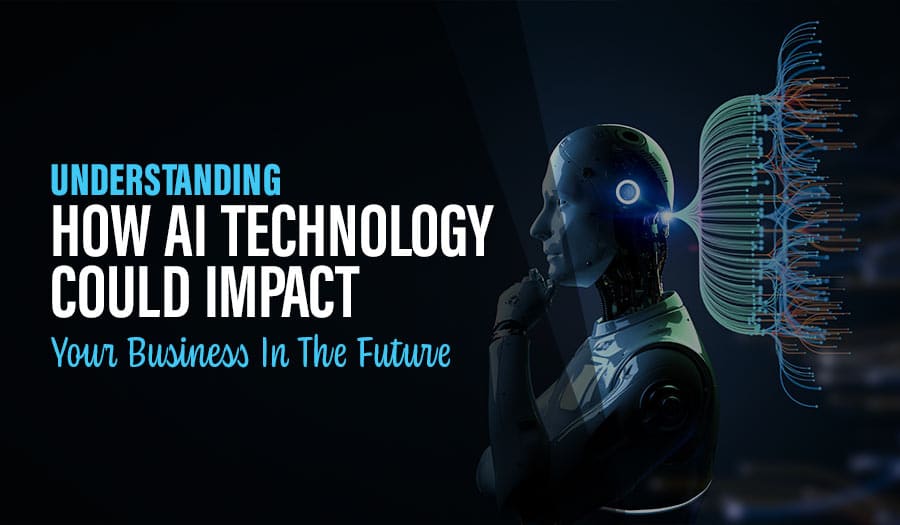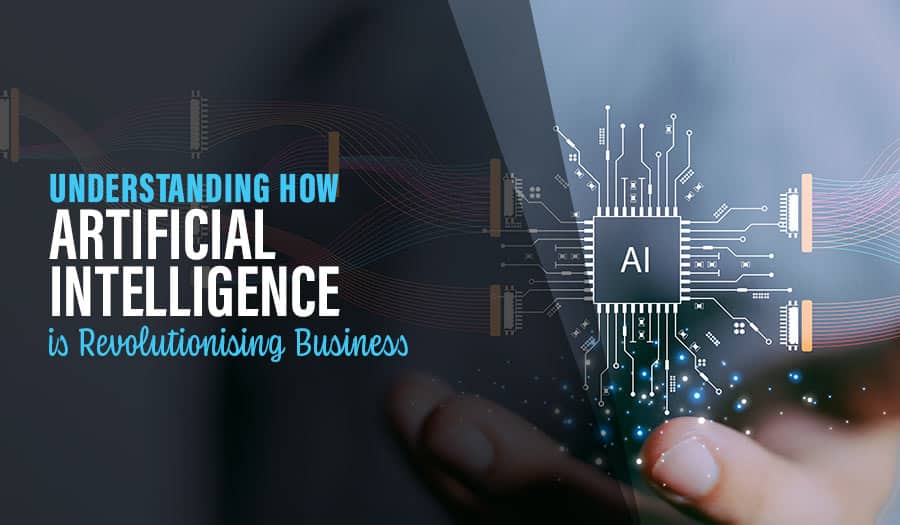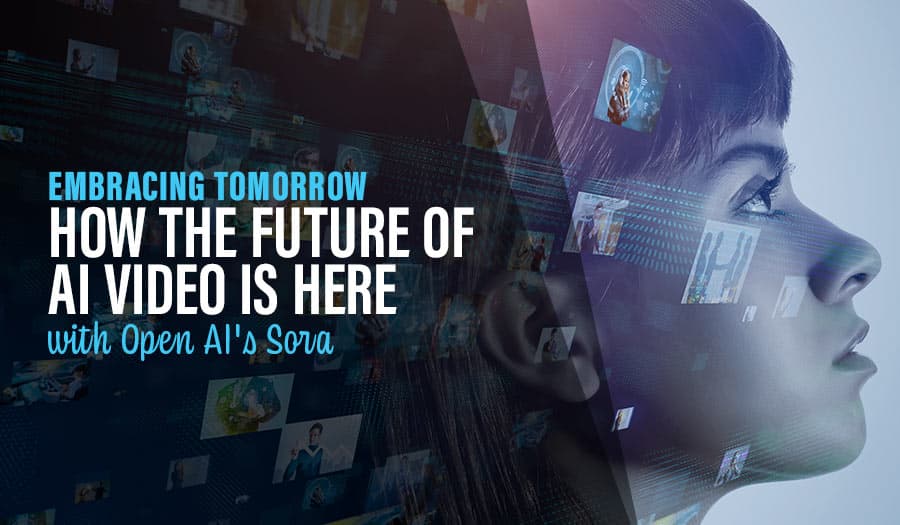How AI Technology Could Impact Your Business in the Future
See how AI can automate work, personalise marketing, improve decisions and cut costs—plus the risks, safeguards and next steps to adopt AI responsibly.
AI is already changing business. Here’s what it means for your team, customers, costs—and how to adopt it safely.
How AI Technology Could Impact Your Business in the Future
Artificial Intelligence is already lifting productivity and reshaping customer experiences. Used well, AI gives you faster decisions, personalised marketing, leaner operations and new products—at a fraction of yesterday’s cost. Below, we unpack what AI is, where it helps most, the risks to watch, and practical steps to deploy it responsibly.
What is AI technology?
Artificial Intelligence (AI) is the use of software that can perform tasks we typically associate with human intelligence—language, pattern recognition, planning and decision-making. Recent leaps in machine learning and abundant data have pushed AI from lab curiosity to everyday business tool, powering automation, content understanding and prediction.
A quick history of AI
From the perceptron (1958) to expert systems (1960s), then winters and rebounds, AI accelerated in the 2000s with modern machine learning, deep learning and cheaper compute. Today, AI spans natural language, vision, speech, recommendations, robotics and more—with real-world outcomes across finance, health, retail and transport.
Types of AI technology
- Machine Learning (ML): Learns from data to predict or classify.
- Natural Language Processing (NLP): Understands and generates human language.
- Robotics: Physical automation guided by AI.
- Expert Systems: Rule-based decision support.
- Neural Networks: Brain-inspired ML models.
- Computer Vision: Understanding images/video.
- Speech Recognition: Transcribing and understanding speech.
- Autonomous Vehicles: Perception + planning on the road.
- Predictive Analytics: Forecasts and propensity modelling.
How AI helps today—and what’s next
1) Automate processes and lift efficiency
AI streamlines repetitive work, reduces error and frees teams for higher-value tasks.
Workplace examples
- Customer service: Chatbots/assistants handle FAQs, triage and hand-offs.
- Data entry & document processing: OCR + NLP extract fields from invoices, forms and emails.
- Recruitment: CV screening, interview scheduling, skill matching.
- Inventory & demand: Forecasting and auto-replenishment.
- Quality control: Vision models detect defects in images/video.
- Finance: Anomaly detection, reconciliation and variance insights.
- Email/social triage: Prioritisation, routing and sentiment alerts.
- Personalised marketing: Next-best-offer and content recommendations.
2) Supercharge customer service & marketing
AI enables 24/7 support, faster response times and 1:1 personalisation.
Top solutions
- Chatbots & voice: Always-on assistance and order/help flows.
- Personalised journeys: Dynamic messaging, products and pricing.
- Sentiment & listening: Surface issues early; protect brand.
- Predictive analytics: Churn risk, LTV, likelihood to buy.
- Image/video recognition: Track UGC, brand compliance, creative lift.
- Recommendation engines: Increase AOV and conversion.
- Email automation: Behavioural segments and triggered sends.
3) Better, faster decisions with AI analytics
AI detects patterns humans miss, providing real-time, actionable insight for pricing, assortment, fraud risk, maintenance schedules and workforce planning. The result: quicker cycles, fewer surprises and more accurate forecasts.
4) Risks and realities to manage
AI introduces new exposures alongside benefits.
Key risk areas
- Bias: Skewed training data → unfair outcomes.
- Security: Models, prompts and data can be attacked.
- Automation shock: Task displacement and change fatigue.
- Privacy: Sensitive data misuse or over-collection.
- Opacity: Hard-to-explain decisions (black-box models).
- Legal/ethical: Accountability, consent, IP and safety.
- Dependency: Over-reliance reduces human skill/oversight.
5) Data protection: practical safeguards
Adopt “privacy-by-design” and “security-by-design”.
- Encryption: TLS in transit; AES-256 at rest; key rotation.
- Access control: Least-privilege, MFA, role-based access.
- Data minimisation: Collect only what you need; set retention.
- Backups & DR: Versioned, tested restores; geo-redundancy.
- Security testing: Pen tests, red-teaming, threat modelling.
- Clear policies: Lawful basis, consent, DPIAs, vendor DD.
- Monitoring: Audit logs, model drift and anomaly alerts.
- Training: Staff awareness on AI use, data handling and prompts.
6) Roles most exposed to AI (tasks, not people)
AI impacts tasks that are routine, rules-based and data-heavy:
- Admin support: Scheduling, data entry, doc prep.
- Customer service (tier-1): FAQs and simple workflows.
- Bookkeeping/accounting tasks: Reconciliation, coding, reports.
- Analyst grunt work: Data cleaning, first-pass insights.
- Transactional sales: Lead scoring, follow-ups, proposals.
- Underwriting pre-work: Triage and document analysis.
Most jobs evolve rather than vanish—expect human-in-the-loop oversight, new tools and upskilling.
7) Net business impact: the upside and the trade-offs
- Efficiency & cost: Automate routine, reduce error, scale output.
- Customer experience: Faster, personalised, consistent service.
- Decision quality: Better forecasts and risk detection.
- Competitive pressure: Early adopters widen the gap.
- People impacts: New roles (prompting, QA, governance) and reskilling.
- Compliance: Data, IP and AI governance become ongoing pillars.
Machine Learning vs Natural Language Processing
- Focus: ML predicts from data; NLP understands/generates language.
- Inputs: ML uses any data; NLP focuses on text/speech.
- Techniques: ML (supervised/unsupervised, RL, deep learning); NLP (tokenisation, NER, parsing, sentiment).
- Use cases: ML (fraud, vision, recommendations); NLP (chatbots, translation, search).
- Complexity: NLP must handle ambiguity, context and tone.
Get started safely: a simple AI adoption roadmap
- Pick 1–2 use cases: High pain, low risk, measurable ROI (e.g., support triage, invoice extraction).
- Governance basics: AI policy, data classification, human-in-the-loop, approval gates.
- Pilot: Time-boxed test with KPIs (CSAT, handle time, accuracy, cost-per-ticket).
- Integrate: Connect to systems (CRM/ERP) with proper access controls.
- Measure & iterate: Compare baseline vs post-AI; tune and expand.
- Upskill: Train teams on tools, prompts, review and escalation.
Take your business to the next level with a Pixel Fish Website.
Check out some of our latest Website Design projects.
View some case studies of our website design work:
Editor Group
Scooter Central
PMC Property
Waters Wine
Sydney Dive Charters
Further Information
Pixel Fish Hosting, Support & Maintenance
AI Technology is Taking Over Business. How Will it Affect Yours?
7 Top Ways E-Commerce is Changing for Business
IT and Technology Website Design
How to Create a Business Social Media Strategy
$16B Opportunity: Why Your Business Must Embrace Online Selling
How to Create a Landing Page for Your Small Business



